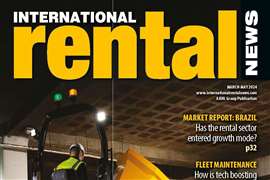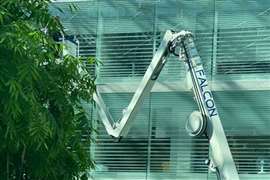International Construction Regional Report: North America
10 September 2013

This year has seen the US construction market continue to recover. Data from the government’s Census Bureau shows that for the 12 months to the end of June – the most recent set of figures available – construction output was up +3.3% to US$ 856 billion for the rolling year.
Admittedly, data from earlier in 2013 painted a brighter picture. The January set of figures showed a +7.1% increase and it is fair to say that the slowdown in June caught many commentators by surprise.
However, the fact remains that the sector is back in a growth phase that began in the second half of 2011. At the low point during that year’s summer, US construction output stood at around US$ 770 billion for the rolling 12 month period, so in two years or so the market has bounced-back by some 11%.
It has been the private construction sector that has led the charge. The residential sector has shown particularly strong growth, but it also suffered the longest and deepest recession of any part of the industry, having started to turn-down as the sub-prime mortgage crisis started to bite in 2005 and 2006.
Elsewhere in the private sector, segments relating to power, office construction, amusement & recreation and lodging have performed well. However, the two largest segments of the market – construction of commercial property and structures for the manufacturing industry are flat or down slightly.
But overall privately-funded construction in the US is growing at about +10% per year at present.
It is a different story in the public sector, which accounts for about a third of US construction output. Here budget cuts are seeing almost all sectors of the industry decline at a rate of about -9% per year. There are a few bright spots, most notably construction related to transportation and power, but otherwise it is a bleak picture, with most sectors seeing double-digit declines.
This includes the largest area of publicly-funded construction, the highway and street segment. In the 12 months to June this year the value of construction put in place was down -12.4% to US$ 75 billion, from US$ 86 billion a year ago.
Highway funding
The problem the sector faces is the lack of a stable long-term funding mechanism for road building and maintenance. Recent years have seen a series of short-term funding bills being enacted, often punctuated by a series of short-term emergency measures and extensions. For example, between the expiry of the 2005 – 2009 legislation and the signing of a new two-year bill in mid-2012 there were no less than nine temporary extensions to the first law to prevent road building and maintenance grinding to a halt.
The issue is not a partisan one. According to Caterpillar group president Stu Levenick, who is involved in lobbying congress on this issue, both Republicans and Democrats agree on the need to put long-term funding in place. “If you would have asked that question a few years ago, it would have been very different,” he said. The difficulty is how to put long-term funding in place.
Historically in the US, road building and mass transit systems have been paid for at a national level from the Highway Trust Fund.
Revenues flow into this from a federal tax on road fuel – US$ 0.184/gallon (US$ 0.048/litre) for gasoline (petrol) and US$ 0.244/gallon (US$ 0.064/litre) for diesel. The Fund was established in 1956 and the current taxation levels were set in 1993 by the Clinton administration.
The reluctance to raise the fuel taxes in the last 20 years – even though they now represent only about 5% of road fuel costs – has seen the Fund suffer shortfalls since 2008, requiring injections of further revenues to keep it solvent. The Congressional Budget Office (CBO) estimates the shortfall will be US$ 12.6 billion in the 2014 fiscal year and US$ 14 billion in 2015.
And the long-term outlook for the Fund is not good. Legislation mandating greater fuel efficiency for vehicles is expected to see the Fund’s receipts fall some -21% by 2040, according to the CBO.
Another concern is that even at current spending levels, the country’s roads are deteriorating. Testimony by the CBO’s assistant director for microeconomic studies, Joseph Kile, in 2011 said that current spending of about US$ 160 billion per year on highways was some US$ 14 billion less than was needed to maintain the nation’s road network in its current state. He added that a further US$ 50 billion per year could be spent on projects whose benefits outweighed their costs.
Funding for roads has clearly fallen behind what is required over the last few decades and there would be a wider economic benefit in upping investment. However, a long-term solution is a long way off – not because of disagreements over the need to fund highways, but over how to fund them.
Al Cervero, vice president of the US-based Association of Equipment Manufacturers (AEM) said, “We had a stimulus package which was great, but it was a flash in the pan. The challenge is that the Highway Bill has no political will to move forward unless someone can come up with a funding method. There have already been something like 200 funding mechanisms put forward.
“We have been told that there is not going to be a Highway Bill unless it is coupled to numerous other bills – what is called the ‘grand bill’, and in the current political climate, that doesn’t look like it’s moving forward.”
In the broadest sense, there are only a few places funds could come from. One option would be some sort of tax increase, such as increasing fuel duty or taxes on new vehicle sales, while others could include raising funds from the private sector, through public-private partnership (PPP)-style concessions and franchises, or through the tolling of existing roads and other ‘user pays’ mechanisms.
But while the list of options in their basic form may be short, there does not seem to be the political will in Washington for a decision to be made on any of this.
It is an issue that has no quick solution. So while the US construction market is picking-up, many would argue the situation could be a good deal better.







